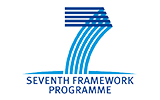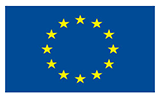In December 2008, the European Union reached an agreement on a package of directives and objectives for climate protection and energy which contains the following targets: By 2020, there is to be a 20% increase in the EU's energy efficiency. In contrast, energy consumption and CO2 emissions are to have been reduced by 20%.
On this basis, the heads of state and government determined the future priorities of EU energy policy at the energy summit in February 2011. In doing so, they have called for the rapid completion of the EU-wide internal market for electricity and gas including all necessary expansion and upgrading of infrastructure. They have also emphasised the significance of the network expansion and underlined the need for greater efforts to increase energy efficiency in all Member States.
Without extensive research, reliable data sources and the cooperation of key experts, it would be impossible to reach these targets. This has brought about the initiation of projects such as e-Highway2050.
Here the project consortium gives brief answers to frequently asked questions about the e-Higwhay2050 project and its contribution to the energy strategy of the European Union.
e-Highway2050: Frequently Asked Questions
-
What is the e-Highway2050 Project?
Eight transmission system operators (BE, CZ, FR, DE, IT, PT, CH, PL) and ENTSO-E, together with 4 associations of technology manufacturers, and 16 RTDs are developing and applying a methodology for the long-term development of the pan-European transmission network. Planning of the transmission network will assume a crucial role when it comes to implementation and realisation of the European single electricity market and the decarbonisation process over the next 40 years. The results will be presented and debated with the whole electricity value chain as well as representatives of all impacted stakeholders in Europe, thereby addressing the main drivers and potential barriers for the proposed grid architecture options. The project is supported by the European Commission via the seventh Framework Programme for Research and Technological Development.
-
What are the objectives of the e-Highway2050 Project?
The project aims at delivering a top-down method to support planning of the pan-European transmission network, including possible highways, capable of meeting European needs between 2020 and 2050. Further objectives of the project are to increase public acceptance of grid expansion, to optimise investment cost, to propose governance and regulatory aspects and to support standardisation of grid technology components to optimise future investment. The project aims to increase the acceptance of grid expansion by means of information exchange and consultation processes that incorporate stakeholder opinions. A portfolio of expansion plans will be proposed in which the 2020-2050 proposals optimise the investment costs over this period of time. Governance and regulatory aspects are being analysed to produce a set of proposals which will be reviewed by regulatory authorities. Standardisation efforts are focused on the optimisation of future investment with the support of the manufacturing industry.
-
What are the benefits of electricity highways?
Electricity highways support the development of a single European electricity market and the decarbonisation of the EU economy.
The development of a single European electricity market emphasises the critical role of interconnections between transmission network operators. The European Commission has highlighted the need to expand interconnections. The liberalisation of the European electricity market aims to create a competitive and truly integrated electricity market in the European Union.
There is a political will to decarbonise the EU economy (see ‘20-20-20 Strategy’ and ‘2050 Energy Roadmap’). Renewable energy sources, key tool of the decarbonisation process, are located at a great distance from consumption centres, e.g. offshore wind in northern Europe or solar resources in the Mediterranean region. Integration of the large potential of renewable energy sources will dramatically change the geography of electricity flows across Europe. There is great variable renewable potential across Europe. The intermittency of renewable energy sources requires more network development for balancing purposes.
-
How can I get involved?
You can get involved via the website, consultations, workshops and an international conference.
A website will show the latest information on the project. Final and preliminary results will be presented there. In the consultation process and during workshops, preliminary results will be presented and discussed.
Opinions and feedback from stakeholders will be incorporated when finalising the results. An international conference aims to communicate and share the final results of the project with all stakeholders. If you are interested in the project send an e-mail to via the contact form. We will send you the latest information on the project such as news, new deliverables etc.
-
Who are the members?
Members of the project are transmission system operators from Belgium, the Czech Republic, France, Germany, Italy, Portugal, Switzerland, Poland and ENTSO-E, university and research institutions together with companies and associations of technology manufacturers and energy and consulting associations.



